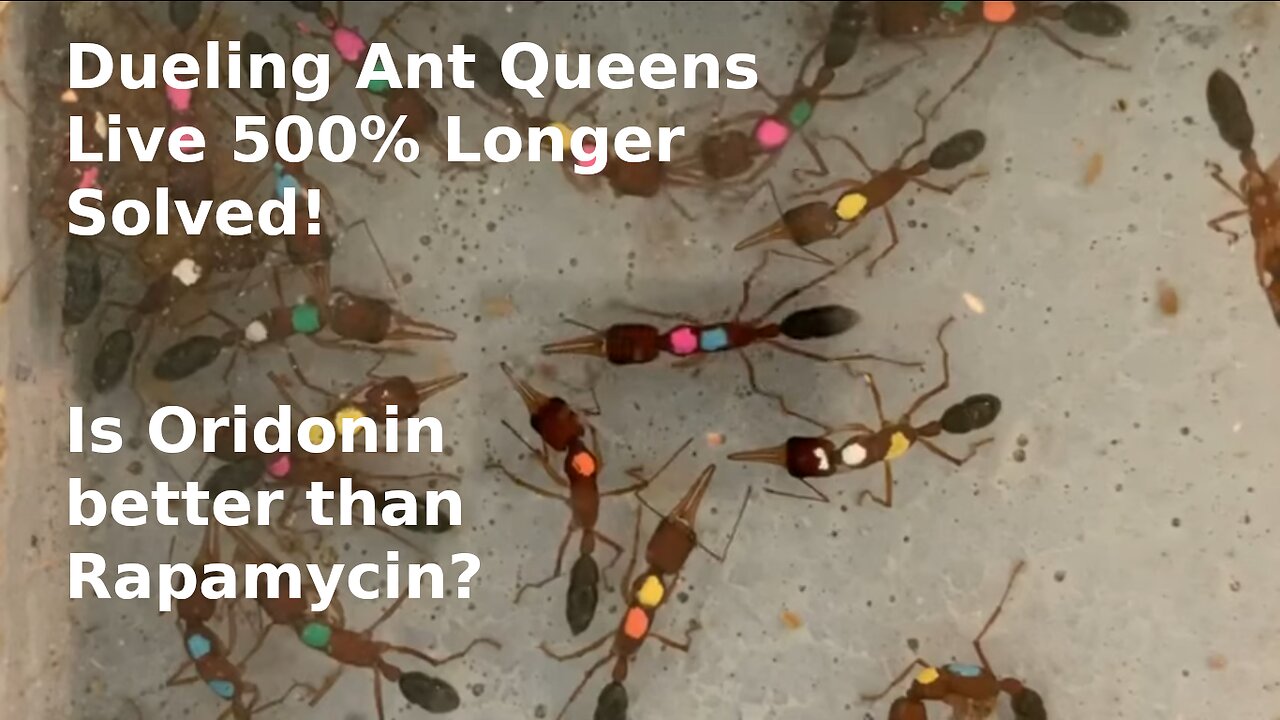Premium Only Content

How Queen Ants Live 500% more, Solved! and Is Oridonin better than Rapamycin?
Insulin signaling in the long-lived reproductive caste of ants
Long live the queen
A trade-off between reproduction and lifespan occurs across most living organisms. An exception is insects such as ants, in which reproductive activity is limited to one or a few “queens” that live much longer than nonreproductive “ workers. ” Studying a pseudo-queen state of the ant Harpegnathos saltator, Yan et al. found that the insulin and insulin-like growth factor signaling pathway was activated to promote reproduction, which also shortened life span. The authors propose that one branch of this pathway, mediated by the protein kinase Akt, is suppressed in the fat body and some ovarian tissues. Increased production of a protein that binds insulin-like molecules in the hemolymph might account for the difference that allowed the longer life span of the pseudo-queen. —LBR
Abstract
In most organisms, reproduction is correlated with shorter life span. However, the reproductive queen in eusocial insects exhibits a much longer life span than that of workers. In Harpegnathos ants, when the queen dies, workers can undergo an adult caste switch to reproductive pseudo-queens (gamergates), exhibiting a five-times prolonged life span. To explore the relation between reproduction and longevity, we compared gene expression during caste switching. Insulin expression is increased in the gamergate brain that correlates with increased lipid synthesis and production of vitellogenin in the fat body, both transported to the egg. This results from activation of the mitogen-activated protein kinase (MAPK) branch of the insulin signaling pathway. By contrast, the production in the gamergate developing ovary of anti-insulin Imp-L2 leads to decreased signaling of the AKT/forkhead box O (FOXO) branch in the fat body, which is consistent with their extended longevity.
-
 2:05:33
2:05:33
TheSaltyCracker
14 hours agoTech Bros try to Hijack MAGA ReeEEeE Stream 12-27-24
298K501 -
 2:01:25
2:01:25
Roseanne Barr
18 hours ago $41.26 earnedJeff Dye | The Roseanne Barr Podcast #80
134K66 -
 7:32
7:32
CoachTY
16 hours ago $11.74 earnedWHALES ARE BUYING AND RETAIL IS SELLING. THIS IS WHY PEOPLE STAY BROKE!!!
114K8 -
 1:01:00
1:01:00
Talk Nerdy 2 Us
13 hours ago💻 From ransomware to global regulations, the digital battlefield is heating up!
36.1K2 -
 3:00:24
3:00:24
I_Came_With_Fire_Podcast
15 hours agoHalf the Gov. goes MISSING, Trump day 1 Plans, IC finally tells the Truth, Jesus was NOT Palestinian
92.4K37 -
 4:11:49
4:11:49
Nerdrotic
18 hours ago $42.87 earnedThe Best and Worst of 2024! Sony Blames Fans | Batman DELAYED | Nosferatu! |Friday Night Tights 334
209K37 -
 7:55:51
7:55:51
Dr Disrespect
22 hours ago🔴LIVE - DR DISRESPECT - WARZONE - SHOTTY BOYS ATTACK
250K33 -
 1:30:23
1:30:23
Twins Pod
21 hours agoHe Went From MARCHING With BLM To Shaking Hands With TRUMP! | Twins Pod - Episode 45 - Amir Odom
154K34 -
 1:02:30
1:02:30
Exploring With Nug
23 hours ago $4.84 earned2 Duck Hunters Missing After Kayak Capsizes!
75.3K6 -
 46:48
46:48
Mally_Mouse
16 hours agoLet's Hang!! -- Opening Christmas gifts from YOU!
81.4K1